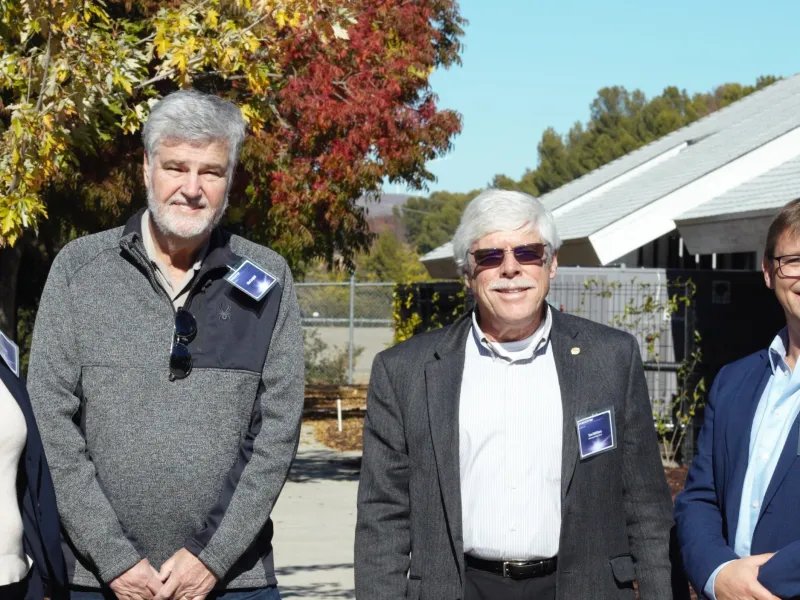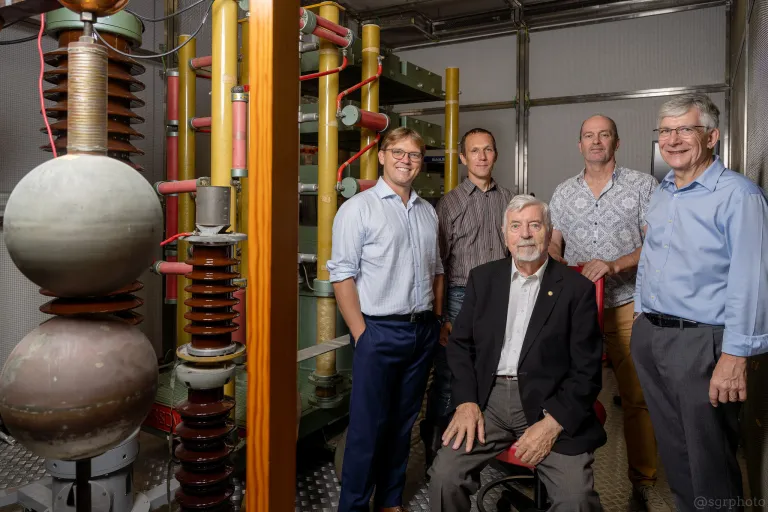
The U.S. Department of Energy (DoE) has awarded a grant to HB11 Energy as part of its 'Innovation Network for Fusion Energy' (INFUSE) program with the objective, “to accelerate basic research to develop cost-effective, innovative fusion energy technologies in the private sector.”
The program will provide access to world-leading expertise from the Laboratory for Laser Energetics (LLE) at the University of Rochester, an institutional partner of the National Ignition Facility which recently demonstrated net energy gain from laser fusion. Led by HB11 Energy's Prof. Thomas Mehlhorn and Prof. Adam Sefkow from LLE, the research will be focused on innovative hydrogen-boron fuel targets in its program to develop clean and safe fusion energy.
INFUSE is one of the first public-private-partnership (PPP) programs established to accelerate fusion energy R&D in partnership with the private sector as part of a broader vision announced by the White House to realise a fusion power plant on a decadal time-scale. To achieve this vision, the DoE is planning a greater PPP program, which is expected to be based on the NASA COTS program that supported SpaceX and established the commercial space launch industry.
The project will see hydrogen-boron developed as an alternative fuel to the deuterium-tritium used in most other fusion approaches, which faces enormous challenges to reach economic viability. Bypassing many of these challenges, the HB11 Energy technology uses a laser to drive the aneutronic hydrogen-boron-11 fusion reaction enabling a clean, safe, reliable and virtually unlimited source of energy that uses abundant fuels resulting in little or no harmful waste.
“It is a great honour to us all at HB11 Energy to have the DoE's fusion program supporting our world-leading researchers and their scientific developments towards hydrogen-boron fusion energy generation—an approach previously thought by many to be impossible,” said Dr. Warren McKenzie, founder & Managing Director of HB11. “We are now one step closer to realising the 1970s theories of our co-founder Professor Hora. Being aneutronic, the technology pathway to a functioning HB11 fusion energy reactor is significantly less complicated and therefore, shorter and much less expensive than any other proposed method of fusion energy. HB11 Energy's technologies could create the world's safest, most economic, lowest-carbon source of abundant clean energy.”
The INFUSE project builds upon another recent milestone for HB11—the publication of a special issue of Laser & Particle Beam journal, including thirteen scientific papers advancing the field of hydrogen-boron fusion as a new clean energy source. The papers are published by HB11's network of scientific collaborators, led by HB11's Chief Scientist, Professor Dimitri Batani. The editorial headlining the special issue describes the origins of the field as the theoretical physics work by Emeritus Professor Heinrich Hora since the 1970’s at UNSW Sydney and more recently through his company, HB11 Energy.

The new research published in the special issue analyses novel approaches to laser-driven hydrogen-boron fusion energy and the applications of high-brightness alpha-particle sources by the world leading physicists including members of HB11 Energy's Scientific Advisory Board:
Fabio Belloni, nuclear physicist at the University of New South Wales, who has shown that by exploiting suprathermal effects, proton-boron fusion can be achieved at lower temperatures than previously thought, opening the possibility of ignition and fusion burn.
Thomas A. Mehlhorn, who presented a roadmap to exploit these newly understood suprathermal effects in a scheme to achieve nonequilibrium thermonuclear burn as a novel strategy to achieve net-energy-gain and economically viable fusion energy from laser driven proton boron fusion.
According to HB11 Energy, the National Ignition Facility's net energy gain breakthrough, which also observed suprathermal effects in recent experiments, brings greater focus to the possibilities of laser fusion and what it can achieve, particularly with many of the economic and engineering benefits of using hydrogen-boron-11 as the fuel.
CAPTION ON FEATURED IMAGE
HB11 Energy at Edward Teller Education Center, University of California – from left: Ellen Gorissen, Dr. E. Michael Campbell, Prof. Thomas A. Mehlhorn, Dr. Warren McKenzie


